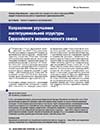Corporate Transparency Rating of the Largest Companies in the Russian Federation for 2019
DOI: 10.33917/es-2.168.2020.89-95
As a part of the corporate transparency study, public annual non-financial reports of companies for 2018 (integrated reports, traditional annual reports, environmental reports, social reports, sustainable development reports, corporate social responsibility reports, etc.) are examined. The sample includes companies from the Expert-600 rating, as well as companies listed on the Moscow and foreign exchanges (LSE, NYSE, NASDAQ HKEX, Euronext NV, DeutscheBörseGroup); backbone companies of the Russian Federation; state corporations and the companies they control with revenues of at least 3 billion rubles. 1,192 companies were inspected in 2019. Every year professional audit on conformity of the study with the stated methodology is conducted. The permanent auditor of the study is Nexia Pacioli audit company













